牛津版八年级英语下册教案(表格型)Unit 3 Online travel
- 格式:doc
- 大小:208.00 KB
- 文档页数:16
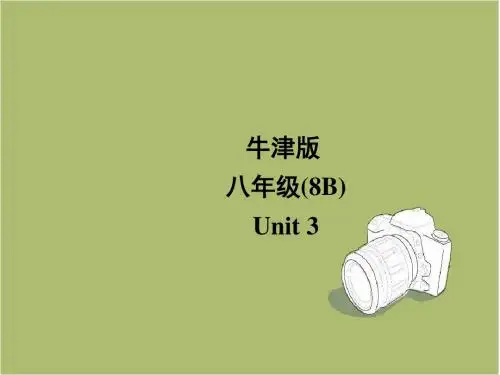
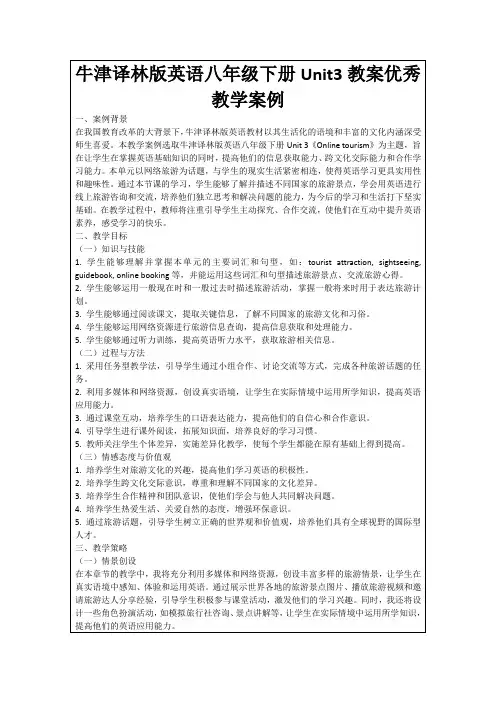
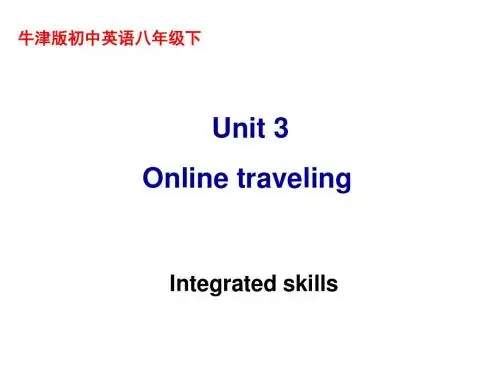
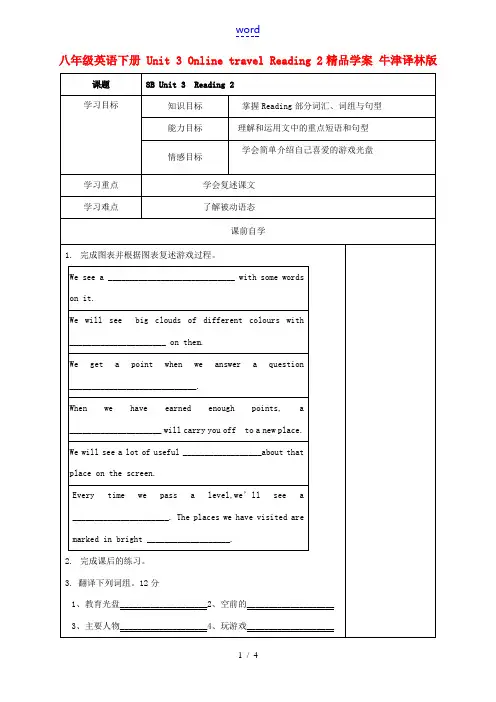
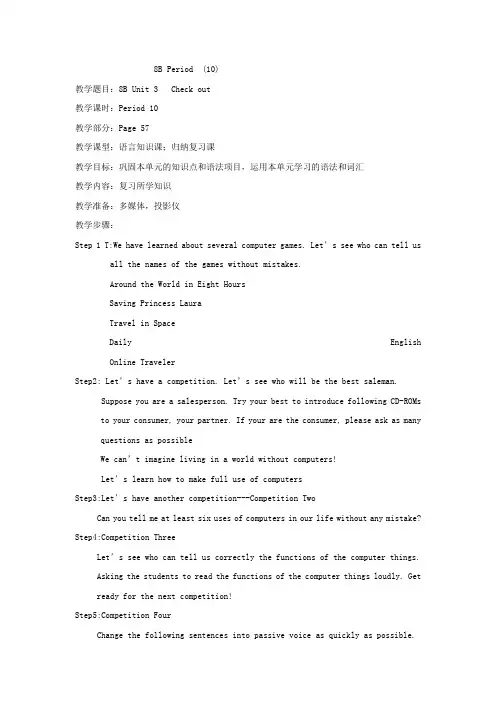
8B Period (10)教学题目:8B Unit 3 Check out教学课时:Period 10教学部分:Page 57教学课型:语言知识课;归纳复习课教学目标:巩固本单元的知识点和语法项目,运用本单元学习的语法和词汇教学内容:复习所学知识教学准备:多媒体,投影仪教学步骤:Step 1 T:We have learned about several computer games. Let’s see who can tell usall the names of the games without mistakes.Around the World in Eight HoursSaving Princess LauraTravel in SpaceDaily English Online TravelerStep2: Let’s have a competition. Let’s see who will be the best saleman.Suppose you are a salesperson. Try your best to introduce following CD-ROMs to your consumer, your partner. If your are the consumer, please ask as manyquestions as possibleWe can’t imagine living in a world without computers!Let’s learn how to make full use of computersStep3:Let’s have another competition---Competition TwoCan you tell me at least six uses of computers in our life without any mistake?Step4:Competition ThreeLet’s see who can tell us correctly the functions of the computer things.Asking the students to read the functions of the computer things loudly. Get ready for the next competition!Step5:Competition FourChange the following sentences into passive voice as quickly as possible.Pay special attention to the sentence:Menu shows a list of information and lets us choose what to do.A list of information is shown on the menu and we are let to choose whatto do.Step6:Competition FiveCan you answer following questions by using passive voice?How can you use the computer to write an article?How can you keep the file for future use?How can you search for information on the computer?What is necessary when you send and receive e-mails?Find the answer on P57Step7:Competition SixHave a chat with your partner about computers. Please talk as much about it as possible. Let’s see which group can do the best job.Step8:HomeworkOrganize your ideas in the talk with your partner and write an article about computers. Please use passive voice if it is necessary.。

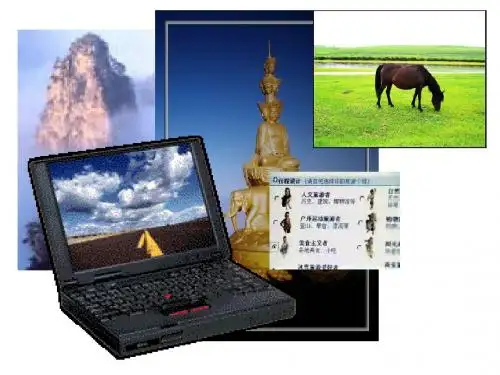
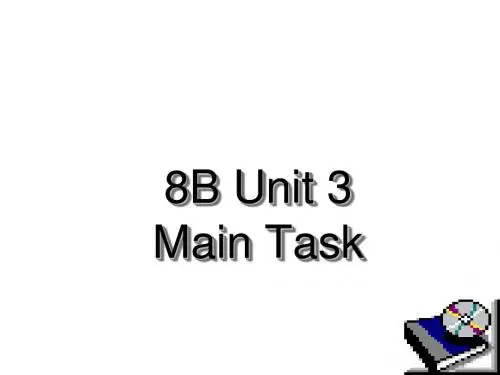
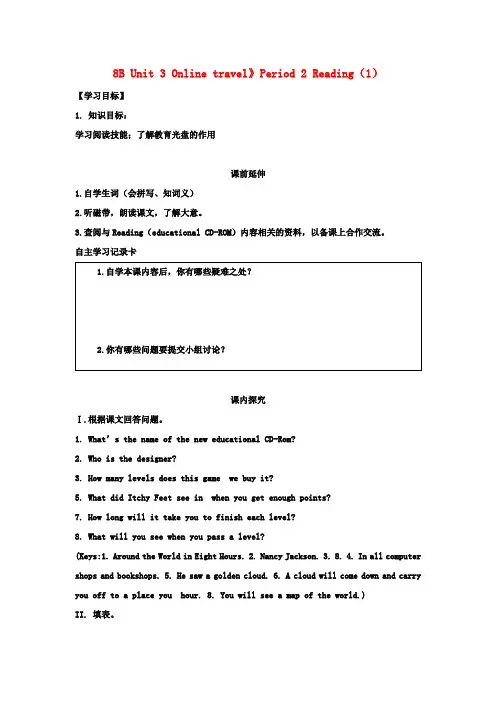
8B Unit 3 Online travel》Period 2 Reading(1) 【学习目标】 1. 知识目标: 学习阅读技能;了解教育光盘的作用
课前延伸 1.自学生词(会拼写、知词义) 2.听磁带,朗读课文,了解大意。 3.查阅与Reading(educational CD-ROM)内容相关的资料,以备课上合作交流。 自主学习记录卡 1.自学本课内容后,你有哪些疑难之处?
2.你有哪些问题要提交小组讨论? 课内探究 Ⅰ.根据课文回答问题。 1. What’s the name of the new educational CD-Rom? 2. Who is the designer? 3. How many levels does this game we buy it? 5. What did Itchy Feet see in when you get enough points? 7. How long will it take you to finish each level? 8. What will you see when you pass a level? (Keys:1. Around the World in Eight Hours. 2. Nancy Jackson. 3. 8. 4. In all computer shops and bookshops. 5. He saw a golden cloud. 6. A cloud will come down and carry you off to a place you hour. 8. You will see a map of the world.) II. 填表。 Name of the game Help you learn Designer Another piece of work Main character Age of the main character Hobbies of the main character (Keys: Around the World in Eight Hours; English and Geography; Nancy Jackson; Online Travel; Itchy Feet; 13; Travelling) 课后提升
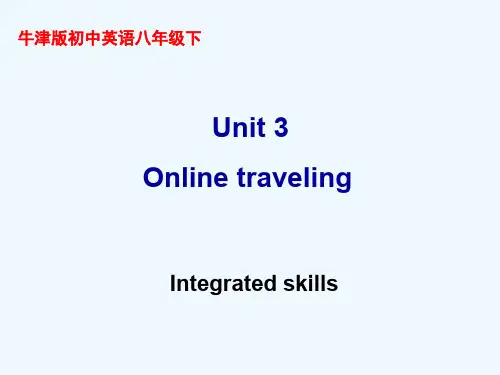
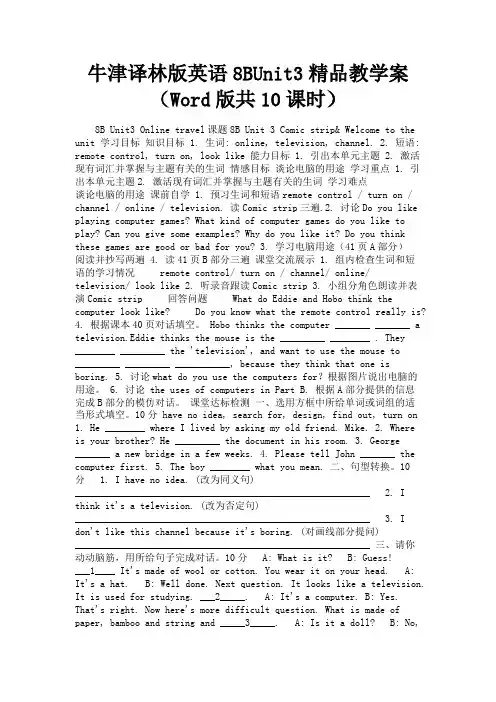
牛津译林版英语8BUnit3精品教学案(Word版共10课时)8B Unit3 Online travel课题8B Unit 3 Comic strip& Welcome to the unit 学习目标知识目标 1. 生词: online, television, channel. 2. 短语: remote control, turn on, look like 能力目标 1. 引出本单元主题 2. 激活现有词汇并掌握与主题有关的生词情感目标谈论电脑的用途学习重点 1. 引出本单元主题2. 激活现有词汇并掌握与主题有关的生词学习难点谈论电脑的用途课前自学 1. 预习生词和短语remote control / turn on / channel / online / television. 读Comic strip三遍.2. 讨论Do you like playing computer games? What kind of computer games do you like to play? Can you give some examples? Why do you like it? Do you think these games are good or bad for you? 3. 学习电脑用途(41页A部分)阅读并抄写两遍 4. 读41页B部分三遍课堂交流展示 1. 组内检查生词和短语的学习情况remote control/ turn on / channel/ online/television/ look like 2. 听录音跟读Comic strip 3. 小组分角色朗读并表演Comic strip 回答问题What do Eddie and Hobo think the computer look like? Do you know what the remote control really is?4. 根据课本40页对话填空。
Unit 3 Online travel Part 1 Teaching designPeriod 7 Integrated skills(Listening, writing and speaking up)Teaching goals●To recognize keywords about puter programs●To identify keywords about topics and sub-topics in the context of a conversation about aneducational puter program●To use key information given in a description and identify relevant additional details bylistening●To develop intensive listening skills by pleting a description and identifying symbols Teaching proceduresStep 1 Having a brainstormingAsk the students to say as much as possible about the puters.Step 2 PresentingDo you like traveling? How do you travel to other places?Do you think if it is possible to travel at home? There is a new educational CD-ROM called ‘Daily English’. Do you like it?Step 3 Listening to the tapeMillie is listening to a radio interview about this CD-ROM. She has downloaded a description of it, but some of the words are missing. Listen to the first part of the interview, finishing part A1 on page 52. Then try to answer the following questions:1. What does this new English course include?2. Is it only good for tourists?3. What can people learn from it?4. How many topics are there in this course?5. Who is the guide?Step 4 PresentingWe know there are some icons on the puter. Different icons have different functions. There are also five icons in this new English course. (Show the icons.) First, ask students to guess their names and functions.Step 5 ListeningThe second part of the description is about the different icons. However, the icons and their functions got mixed up because of a virus. Listen to the second part of the interview. Finish Part A2 on page 50.Step 6 pleting theMillie is writing an to Sandy. She wants to tell her the CD-ROM program ‘Daily English’, but she has forgotten some of the details. Can you say something?●It’s an English course from Australia.●It includes a book and five CD-ROMs.●It’s good for students and tourist.●We can learn using the telephone, asking and answering questions, talking about the weatherand the time.…Finish Part A3 on page 51.Step 7 PractisingSandy is using ‘Daily English’, but he has some problems. So she is asking Millie for help. Listen to the conversation on page 53. Then make a similar dialogue.Step Homeworka. Read the two passages and try to learn it by heart.b. Translation1. 当你有危险时,你可以向警察求救。